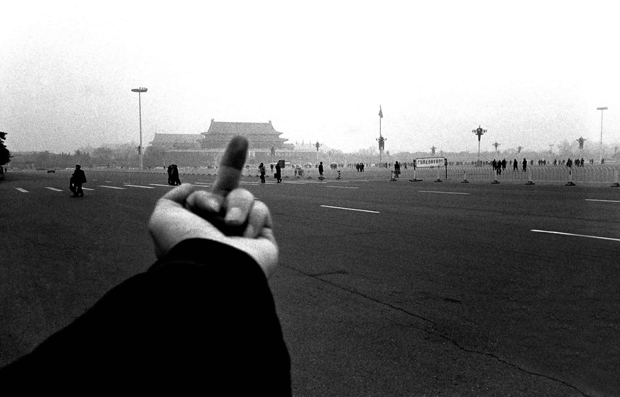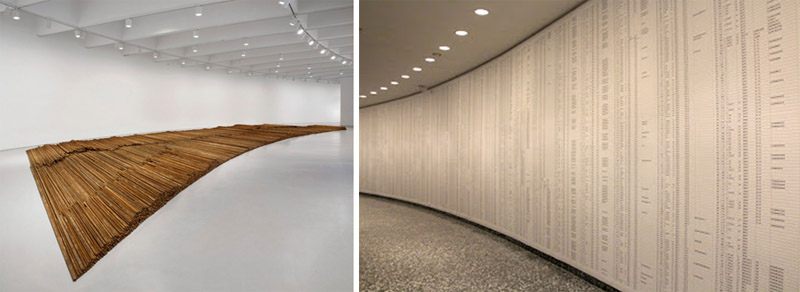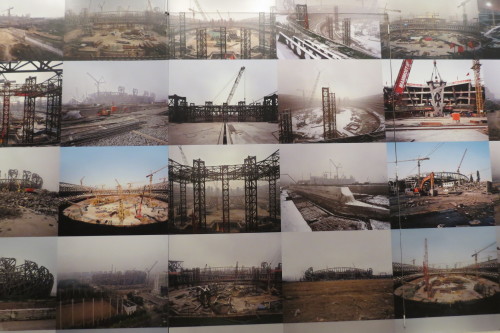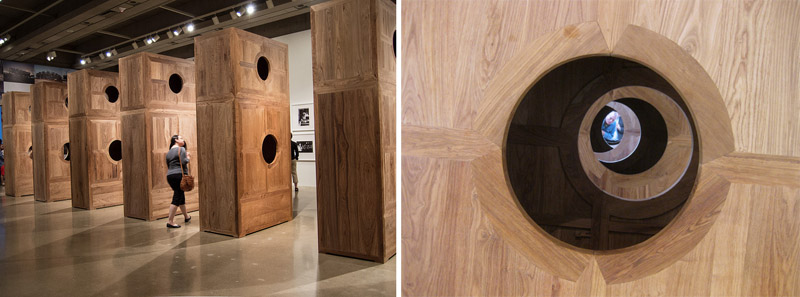 Ai Weiwei, Study of Perspective – Triananmen Square, 1995 – 2003, gelatin silver print, 38.9 x 59 cm. © 2013 Ai Weiwei
Ai Weiwei, Study of Perspective – Triananmen Square, 1995 – 2003, gelatin silver print, 38.9 x 59 cm. © 2013 Ai Weiwei
Is profanity and rebellion enough to be deemed as the most important contemporary artist in today’s generation? The art industry seems to think so. However, there is definitely more than meets the eye in Ai Weiwei’s multi-media works. The AGO opened up their second floor to Ai Weiwei, one of China’s most prolific artists, on August 17, 2013, with a massive exhibition of his works spanning his entire career. Despite being on house arrest since 2011, Weiwei is able to remain engaged with society and create powerful thought-provoking pieces that invite the viewer to interact with.
There are many factors acting towards Weiwei’s popularity. The primary factor is his Mass Communication background and the way he frequents micro-blogging social media sites such as Twitter and his own blog. The AGO incorporates the theme of communication and open dialogue by having a feedback area in the middle of the exhibition. Videos are submitted, and screened, about freedom and what it means to live under suppression or to be free. In addition a whole wall is covered with the long list of the thousands of students who died at the Sichuan earthquake and citizens of Chinese origin say their names out loud, making it more dramatic. These scattered elements make the exhibition even more powerful by giving the voice back to the people instead of a sole dominant presence of the artist.
 Installation view with Straight, floor piece of ribar, 2008 – 2012 and (in the background) the wall covered with the names of students who died at the Sichuan earthquake
Installation view with Straight, floor piece of ribar, 2008 – 2012 and (in the background) the wall covered with the names of students who died at the Sichuan earthquake
Another medium the AGO focuses on is photography as documentation and primary information. The exhibition titled According to What? displays several photos from Weiwei’s time in New York during the late 80s as well as behind-the-scenes images of the construction of The Birds Nest, Beijing’s Olympic Stadium for the 2008’s Olympic Games, that Weiwei co-designed. The photos act well to flesh out Weiwei’s argument and critical examination of China’s policies that aim to superficially portray itself as a global superpower while at the same time ignore domestic issues such as civil rights.
 Images of the construction of The Birds Nest, Beijing’s Olympic Stadium, 2005 – 2008
Images of the construction of The Birds Nest, Beijing’s Olympic Stadium, 2005 – 2008
The exhibition spans his life’s work and interests giving Torontonians a chance to understand Weiwei fully. The AGO includes what is documented to be Weiwei’s first sculpture from 1998 called Chateau Lafite inspired by ready-mades by Duchamp and Warhol, as well as screening an excerpt of Never Sorry, a powerful documentary and contextualised introduction of the artist. While several of Weiwei’s references are to Chinese culture and prehistories, he assumes no prior knowledge of the subject which makes his work easily accessible.
 Installation view with Colored Vases, 2007 – 2010 in front of the triptych, Dropping a Han Dynasty Urn, 1995/2009
Installation view with Colored Vases, 2007 – 2010 in front of the triptych, Dropping a Han Dynasty Urn, 1995/2009
Is Weiwei trying too hard or is he really just that provocative? On a Saturday morning when I entered the exhibition, it was teeming with families, couples and all around art enthusiasts who were fascinated by Weiwei’s work, engaging with Straight, a floor piece made of ribar to depict a crack in the earth. Another favorite is Moon Chest, a huge installation, made of several huali wood cabinets with holes carved into the centre in such a way that when looking through them it shows every stage of the Moon.
 Installation view with Moon Chest, 2008
Installation view with Moon Chest, 2008
Weiwei’s power is not only in his profoundly captivating pieces but the educated and socialist stance he takes, whether we recognize it or not.
Aliya Bhatia
*The exhibition is open till October 27, 2013, Art Gallery of Ontario at 317 Dundas Street West, Toronto. Gallery Hours: Tue 10 – 5:30, Wed 10 – 8:30, Thu – Sun 10 – 5:30 p.m.
